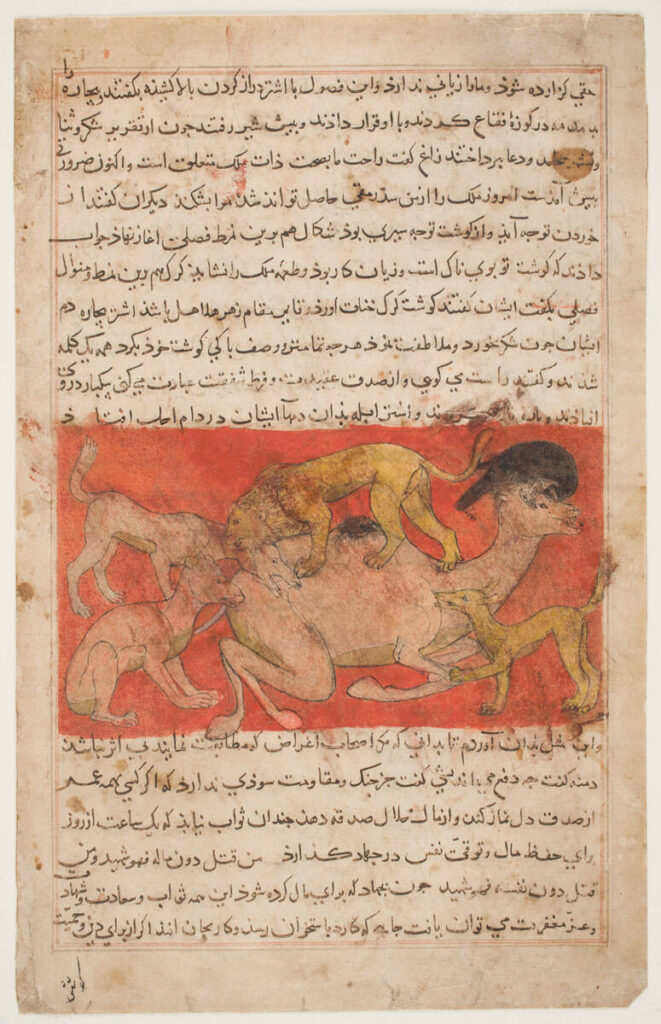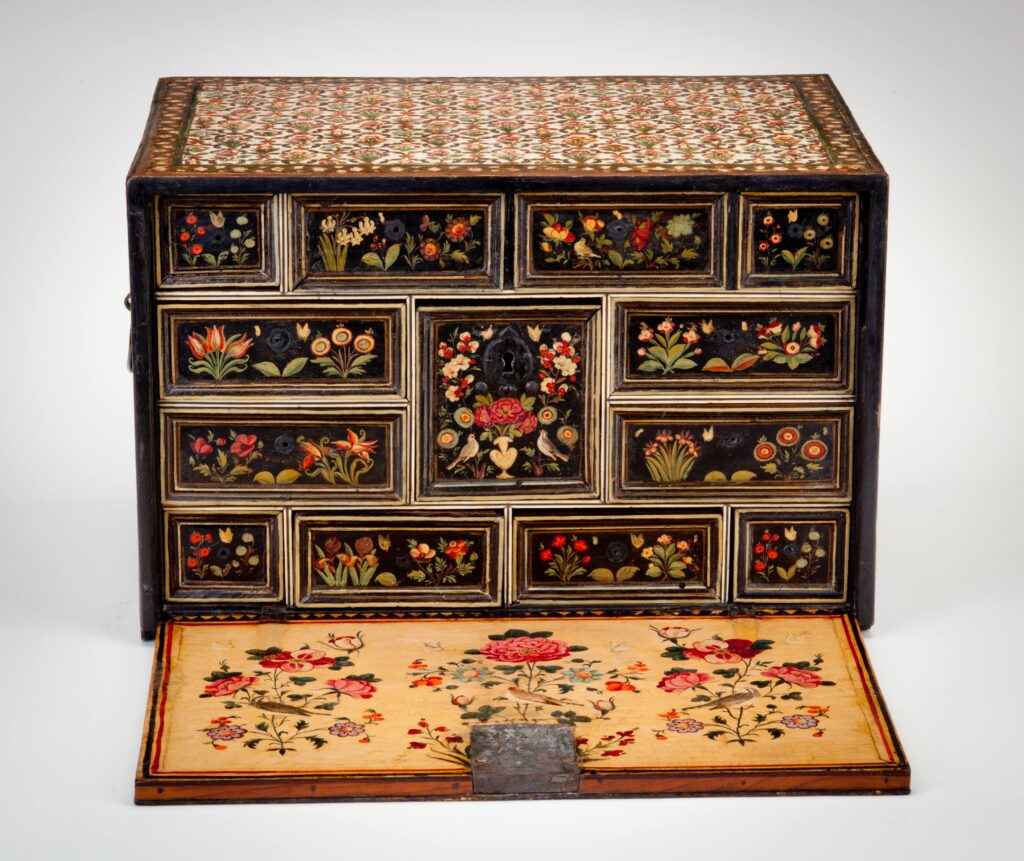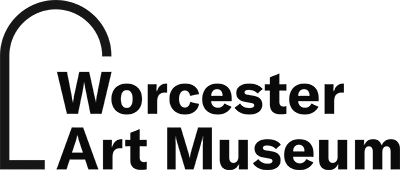Gallery of West, South, and Southeast Asian Art to be Reimagined and Present Never Before Seen Works from the Collection.


Worcester, MA — July 16, 2024 — This summer, the Worcester Art Museum will begin a redesign and reimagining of its Gallery of West, South, and Southeast Asian art to better focus on the depth and diversity of art production in these regions spurred on by artistic interactions across cultures. The gallery is set to reopen to the public on July 19th, with additional objects to be installed over the summer and fall following conservation treatment. It is another step in the Museum’s ongoing work to revitalize its campus and provide opportunities for discovery and exploration through the experience of art.
As part of this process, WAM is also focusing on identifying new acquisitions of Islamic and Himalayan art, to expand the range of artistic styles and practices across the region. When the gallery reopens, it will include a new acquisition: a Qajar-era tile, crafted by the renowned artisan ‘Ali Muhammad Isfahani at Tehran in 1885. The tile depicts a historical scene featuring Shah ‘Abbas I (1571-1629 CE) of the Safavid dynasty and Vali Muhammad Khan, the deposed leader of the Ashtarkhanid dynasty, using vibrant hues of cobalt-blue, turquoise, yellow, and manganese on a white slip background. Inspired by a mural from the Chehel Sotoun Palace in Isfahan, the intricate scene commemorates a historical meeting in 1611-1612 CE when Vali Muhammad Khan sought refuge in the Safavid empire. In addition to its remarkable design, the tile is significant for its reflection of the Safavid revival movement during the Qajar period (1794-1925 CE), which saw Iran embracing modernization and a renewed national identity—and which extended into the early 20th century with the increased promotion of Persian art internationally. The acquisition is a gift of Barrett and Mahroo Morgan.
“This refresh affirms WAM’s commitment to the collection, preservation, and thoughtful exhibition of its West, South, and Southeast Asian art,” said Yagnaseni Datta, the Sohail and Mona Masood Assistant Curator of Asian and Islamic Art. It marks the beginning of a larger renovation project aimed at rejuvenating all of the Museum’s Asian art galleries, alongside new acquisitions to address gaps in the collection. We are also expanding our Islamic and Himalayan art offerings to represent the multiplicity of religio-cultural identities amongst Asian communities to a greater extent.”
A driving force behind this commitment is to showcase Asian art while challenging the implicit biases that may have shaped past interpretations. This shift acknowledges the importance of design, language, and categorization in how the Museum presents works of art to foster inclusive cultural dialogue, an essential aspect of the Museum’s dedication to connecting communities.
Central to the refresh is unveiling some never-before-seen artworks from the collection, presenting an exciting journey of discovery for visitors. Artworks will be displayed in a transregional context –highlighting their historical and cultural significance rather than emphasizing their country of origin and their many different mediums. Artworks that will debut include a Northern Indian Writing Cabinet with a Drop Leaf Front from the 18th century. It features a series of intricately painted doors with floral designs. Various sculptural objects will also be displayed, such as an Elephant Figurine from the Si Satchanalai kilns of Thailand, dated between the 14th and the 16th centuries. Additionally, there will be a folio on view featuring “The Killing of the Camel,” from a Kalīla wa Dimna codex (“Kalila and Dimna”) by Abu’l Ma’ali Nasr Allah ibn Munshi, from Iran and dated 1333, in remarkable condition.
“Yagnaseni’s revitalization of WAM’s presentation of art from West, South, and Southeast Asia is another important step in the Museum’s ongoing strategy to refresh our campus and improve the experience for our visitors,” said Claire Whitner, Director of Curatorial Affairs and the James A. Welu Curator of European Art. “Her approach, which centers around identifying points of connection between cultures, is introducing new scholarship and methodologies to our work. At the same time, Yagnaseni’s reinstallation will bring new objects on view, both from our collections and through acquisitions, underscoring how different and new this installation will be.”
The reinstallation of WAM’s Asian art gallery is one component of the Museum’s larger, ongoing improvements to its campus. WAM’s $125 million A Bold Step Forward campaign is a multiyear program of capital and programmatic investments addressing critical needs across the Museum, including behind-the-scenes and back-of-house upgrades to infrastructure, and more public-facing changes—such as the new library in the Higgins Education wing, the redesigned and rebuilt Lancaster Street entrance, and now this reimagined gallery of art from West, South, and Southeast Asia. With over $75 million raised towards the goal, WAM continues to plan future collection gallery reinstallation, to be announced over the next year. These are in addition to the upcoming installation of the newly designed Arms & Armor galleries, which will open in 2025.
This project is supported in part by the E. Rhodes and Leona B. Carpenter Foundation.
About the Worcester Art Museum
The Worcester Art Museum creates transformative programs and exhibitions, drawing on its exceptional collection of art. Dating from 3000 BCE to the present, these works provide the foundation for a focus on audience engagement, connecting visitors of all ages and abilities with inspiring art and demonstrating its enduring relevance to daily life. Creative initiatives—including pioneering collaborative programs with local schools, fresh approaches to exhibition design and in-gallery teaching, and a long history of studio class instruction—offer opportunities for diverse audiences to experience art and learn both from and with artists.
The Worcester Art Museum, located at 55 Salisbury Street in Worcester, MA, is open Wednesday through Sunday from 10 am to 4 pm. For information on admission and discounts, visit https://www.worcesterart.org/visit. Museum parking is free.
For more information, please contact:
Kelly Aldenberg
Worcester Art Museum
KellyAldenberg@worcesterart.org
508-793-4390
Images above: Right: Northern Indian, Writing Cabinet with drop-leaf front, 1700s. painted wood, 29.5 x 45.3 x 31.4 cm, Worcester Art Museum,1989.162.
Left: “The Killing of the Camel,” folio from a Kalīla wa Dimna (“Kalila and Dimna”) by Abu’l Ma’ali Nasr Allah ibn Munshi, 1333, opaque watercolor, ink, and gold on paper, 32.9 x 21 cm, Worcester Art Museum, Jerome Wheelock Fund, 1935.27

